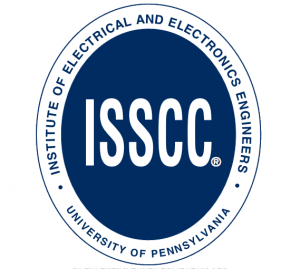 We are very excited to announce we will be presenting FIVE papers at ISSCC 2021! This brings EEMS total ISSCC paper count over the last five years to 16 (five papers in 2021, one in 2020, four in 2019, three in 2018, and three in 2017), with 22 papers total in Prof. Mercier’s career. ISSCC 2021 will feature the following papers:
We are very excited to announce we will be presenting FIVE papers at ISSCC 2021! This brings EEMS total ISSCC paper count over the last five years to 16 (five papers in 2021, one in 2020, four in 2019, three in 2018, and three in 2017), with 22 papers total in Prof. Mercier’s career. ISSCC 2021 will feature the following papers:
- Abdullah will present a paper entitled “A 98.2%-Efficiency Reciprocal Direct Charge Recycling Inductor-First DC-DC Converter”, which demonstrates how the gate charge of power MOSFETs can be recycling to help ameliorate the trade-off between switching and conduction losses in DC-DC converters, demonstrating extremely good efficiency even at low current levels, all with an inductor-first topology with good EMI properties.
- Jason will present a paper entitled “A Distortion-Free VCO-based Sensor-to-Digital Front-end Achieving 178.9-dB FoM and 128-dB SFDR with a Calibration-Free Differential Pulse Code Modulation Technique”, which improves upon his VLSI 2020 work by demonstrating how to reduce the input voltage to a VCO quantizer through a DPCM feedback technique to linearize it without requiring a gain error correction loop, demonstrating a high-impedance VCO based front-end with no measurable distortion and a very large dynamic range.
- Miao will present a paper entitled “Improving the Range of Wi-Fi Backscatter via a Passive Retro-Reflective Single-Side-Band-Modulating MIMO Array and Non-Absorbing Termination”. A collaboration with Prof. Dinesh Bharadia’s group, here we improve our Wi-Fi-compatible backscatter results by utilizing a Van Atta-based MIMO antenna array that redirects backscattered power back to the incident Wi-Fi source, all while continuing to ensure single-side-band modulation. This helps increase the range of Wi-Fi backscatter communication to 20+ meters.
- Corentin (from Prof. Drew Hall’s group) will present a paper entitled “A 400mVpp, 92.3 dB-SNDR, 1kHz-BW, 2nd-order VCO-based ExG-to-Digital Front-End Using a Multiphase Gated-Inverted Ring-Oscillator Quantizer”. In collaboration with Prof. Hall’s group, this paper utilizes a new tri-state gated ring oscillator as a VCO quantizer to reduce the effects of mismatch induced nonlinearity towards a very high input impedance ADC-direct analog front-end with large dynamic range.
- Abraham (from Prof. Gert Cauwenbergh’s group) will present a paper entitled “An Optically-Addressed Nanowire-Based Retinal Prosthesis with 73% RF-to-Stimulation Power Efficiency and 20nC-3uC Wireless Charge Telemetering”. In collaboration with Nanovision Biosciences and Prof. Cauwenbergh’s group, this paper will explore the design of a CMOS chip used to efficiently drive an optically-addressed nanowire-based retinal stimulator system, using a wireless charge telemetry approach to push feedback regulation to an external wearable and away from heat-sensitive retinal tissue.
These are exciting developments, and we look forward to sharing these results in February 2021.
